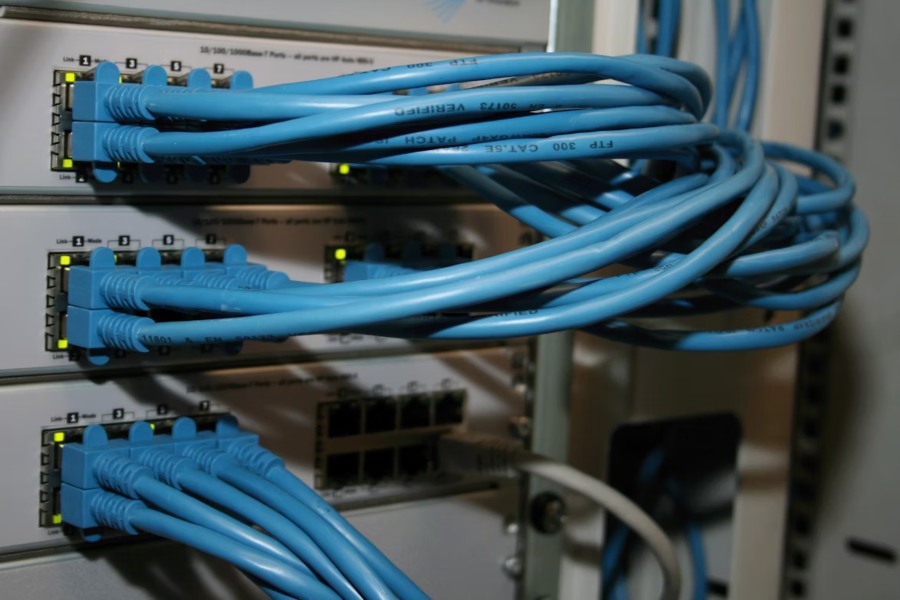
In today’s digital world, IP addresses are the foundational element of internet communication. One of the most commonly used address categories is the Class C network. But how many IP addresses does a Class C network have? This is a question that comes up frequently for network engineers, IT students, and cybersecurity professionals. Knowing the answer is crucial to designing a scalable and secure network.
The Class C IP address range falls within the 192.0.0.0 to 223.255.255.255 range. It’s widely used in smaller business environments, home networks, and subnetting schemes. Understanding how many IP addresses a Class C network has helps avoid resource wastage and improves the efficiency of IP planning. When calculating usable addresses, you must subtract reserved addresses like the network and broadcast addresses. This article dives deep into the technical and practical sides of Class C addressing.
Whether you’re preparing for a certification exam, building a network, or just curious, the answer to how many IP addresses a Class C network has can significantly impact your IT decisions. Let’s explore the answer through layered explanations, expert breakdowns, and practical scenarios.
What Is a Class C IP Network and Why Is It Important?
IP addresses are grouped into five classes, with Class A through Class E serving different scopes of networking. Class C networks are particularly known for serving small-scale networks efficiently.
A Class C IP address starts from 192.0.0.0 and goes up to 223.255.255.255. It uses the default subnet mask of 255.255.255.0, allowing for 256 IP addresses in each network. However, the number of usable IP addresses is 254, due to the reservation of the first and last addresses.
The network address (e.g., 192.168.1.0) represents the network itself and cannot be assigned to a host. Similarly, the broadcast address (e.g., 192.168.1.255) is used to communicate with all hosts in the network. These two reservations explain why 256 becomes 254 usable addresses.
Class C networks are widely implemented in home networks, departmental LANs, and small businesses. They offer simplicity in setup and are compatible with common consumer-grade routers. With NAT (Network Address Translation), these networks can extend to hundreds of devices with minimal configuration.
Knowing how many IP addresses a Class C network has helps prevent issues like IP conflicts, oversubscription, and security vulnerabilities. It’s an essential concept for network architects and cybersecurity planners alike.
When Should You Use a Class C Network in Your Design?
Class C networks are well-suited for many modern network environments, particularly when simplicity and efficiency are priorities. Here’s when a Class C setup makes the most sense:
- Class C for Small Business Offices
If your office has fewer than 254 devices—computers, printers, phones, etc.—a Class C network offers the perfect balance of capacity and simplicity. It supports internal communications while minimizing IP waste. - Home Network Applications
Most consumer-grade routers are preconfigured to assign IP addresses in the Class C private range, such as 192.168.0.1 to 192.168.0.254. These addresses are ideal for households and small setups where external routability isn’t required. - Subnetting with Class C Efficiency
Need segmentation within your network? A Class C block can be easily divided using CIDR notation. Splitting it into /26 or /28 subnets creates smaller, manageable segments—great for structured IP planning. - Effective Network Segmentation
For organizations wanting to separate departments (e.g., HR from IT), using multiple Class C subnets is a simple way to isolate traffic, improve security, and reduce broadcast domain size.
Choosing Class C is a smart decision when your infrastructure needs are modest but demand flexibility and scalability.
Why the Usable IP Count Isn’t 256
A common misconception is that all 256 IP addresses in a Class C network can be assigned to devices. However, this isn’t the case due to specific reserved purposes within the network. Here’s why only 254 IP addresses are usable:
- Network Address: The very first address in the range (e.g., 192.168.1.0) is reserved to identify the entire subnet. It cannot be assigned to any host or device.
- Broadcast Address: The last address in the range (e.g., 192.168.1.255) is used to send data to all devices on the network. Assigning this IP to a host would disrupt normal broadcast communication.
- Usable Host IPs: The remaining addresses—between the network and broadcast IPs—are the ones available for use. These typically range from 192.168.1.1 to 192.168.1.254, totaling 254 usable IPs.
- Avoiding Routing Conflicts: Assigning a network or broadcast address to a device can break routing protocols and cause serious communication errors.
- Reserved for Services: In many setups, additional IPs may be reserved for network services like DHCP servers, DNS servers, or gateways, reducing the available IP pool slightly depending on configuration.
These reservations are essential to efficient and error-free network planning.
Calculating the Number of IP Addresses in Class C
To determine how many IP addresses are available in a Class C network, you start with a basic formula based on subnetting principles. The total number of IP addresses in any given subnet is calculated as:
2^(32 – subnet bits)
For a standard Class C network, the default subnet mask is 255.255.255.0, which translates to /24 in CIDR (Classless Inter-Domain Routing) notation. Using the formula:
2^(32 – 24) = 2^8 = 256 total IP addresses
However, not all 256 IPs are assignable to devices. Two specific addresses are reserved in every subnet:
- The network address (e.g., 192.168.1.0) is used to identify the subnet itself.
- The broadcast address (e.g., 192.168.1.255) is used to send data to all devices on the subnet.
After accounting for these two reserved addresses, you are left with 254 usable IP addresses. These can be assigned to computers, printers, servers, or other devices on the network.
Understanding this calculation is crucial when planning address allocation, especially for organizations that want to segment departments or manage larger-scale networks efficiently.
Common Scenarios Using Class C Network Size
Class C networks are highly versatile and appear in a wide range of networking scenarios, from home setups to cloud infrastructure.
How Many Devices Can a Class C Network Support?
A standard Class C network allows for up to 254 usable IP addresses. This makes it a great fit for small offices, home networks, and departments within larger organizations where the number of connected devices is relatively low.
Use in Cloud Network Architectures
Class C addressing is commonly used in cloud environments, especially for Virtual Private Cloud (VPC) configurations. These subnets are ideal for isolating workloads or separating test and production environments due to their manageable size.
Expanding Class C Networks
Need more than 254 devices? Supernetting allows you to merge multiple Class C blocks into larger subnets—like /23 or /22—to increase capacity while still keeping routing tables efficient.
Private vs. Public IP Ranges
Not all Class C IPs are private. Only reserved blocks like 192.168.x.x are non-routable and safe for internal use. Others can be routed publicly unless otherwise designated.
Importance of Strategic IP Planning
Careful IP planning using Class C networks can help reduce address exhaustion, improve security through segmentation, and simplify future network troubleshooting.
Conclusion
How many IP addresses does a Class C network have isn’t just academic – it’s essential to modern networking. Whether you’re designing a home network, managing cloud infrastructure, or deploying IoT devices, the Class C range offers simplicity and scalability.
The 254 usable IPs in a Class C block may seem limited in large enterprises, but for countless small networks, it’s the gold standard. Mastering IP math, subnetting rules, and usage scenarios empowers IT professionals to avoid common pitfalls and future-proof their networks.
FAQ’s
How many usable IP addresses are in a Class C network?
A Class C network provides 256 total addresses, but only 254 IP addresses are usable for devices. The first is the network address, and the last is the broadcast address, which cannot be assigned.
What is the subnet mask for a Class C network?
The default subnet mask for a Class C network is 255.255.255.0, which is represented as /24 in CIDR notation and allows for 256 total IPs per subnet.
Can Class C networks be subnetted?
Yes, Class C networks can be easily subnetted using CIDR notation. For example, /26 gives 64 IPs, /28 gives 16 IPs, and so on—ideal for creating smaller subnets.
Are Class C addresses still relevant?
Absolutely. Class C addresses remain highly relevant today and are widely used in local area networks, virtual networks, and cloud-based VPC setups due to their simplicity and manageability.
How is the Class C IP range defined?
The Class C IP address range spans from 192.0.0.0 to 223.255.255.255. Some are reserved for private use (like 192.168.x.x), while others are publicly routable.





